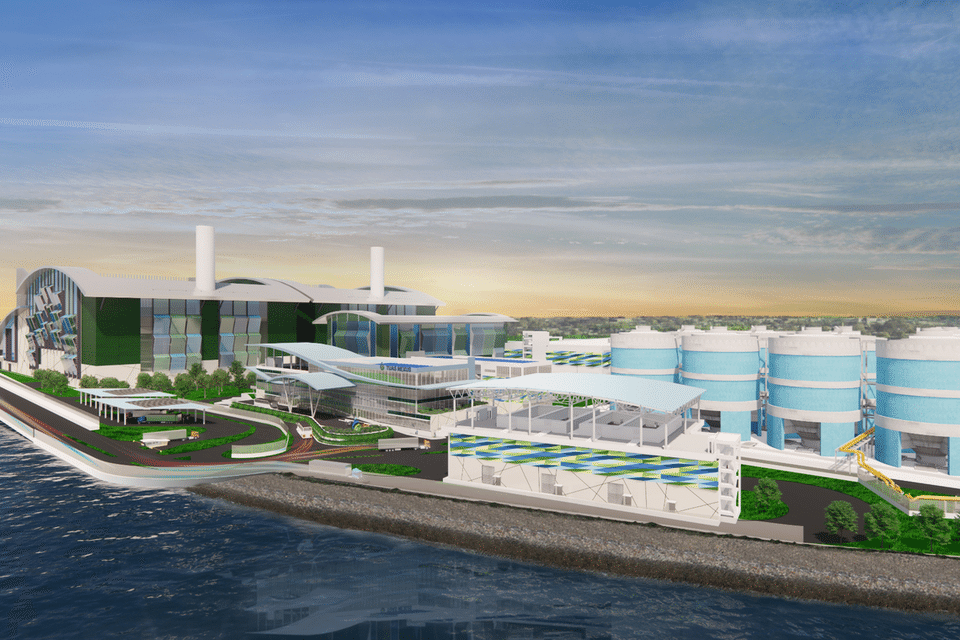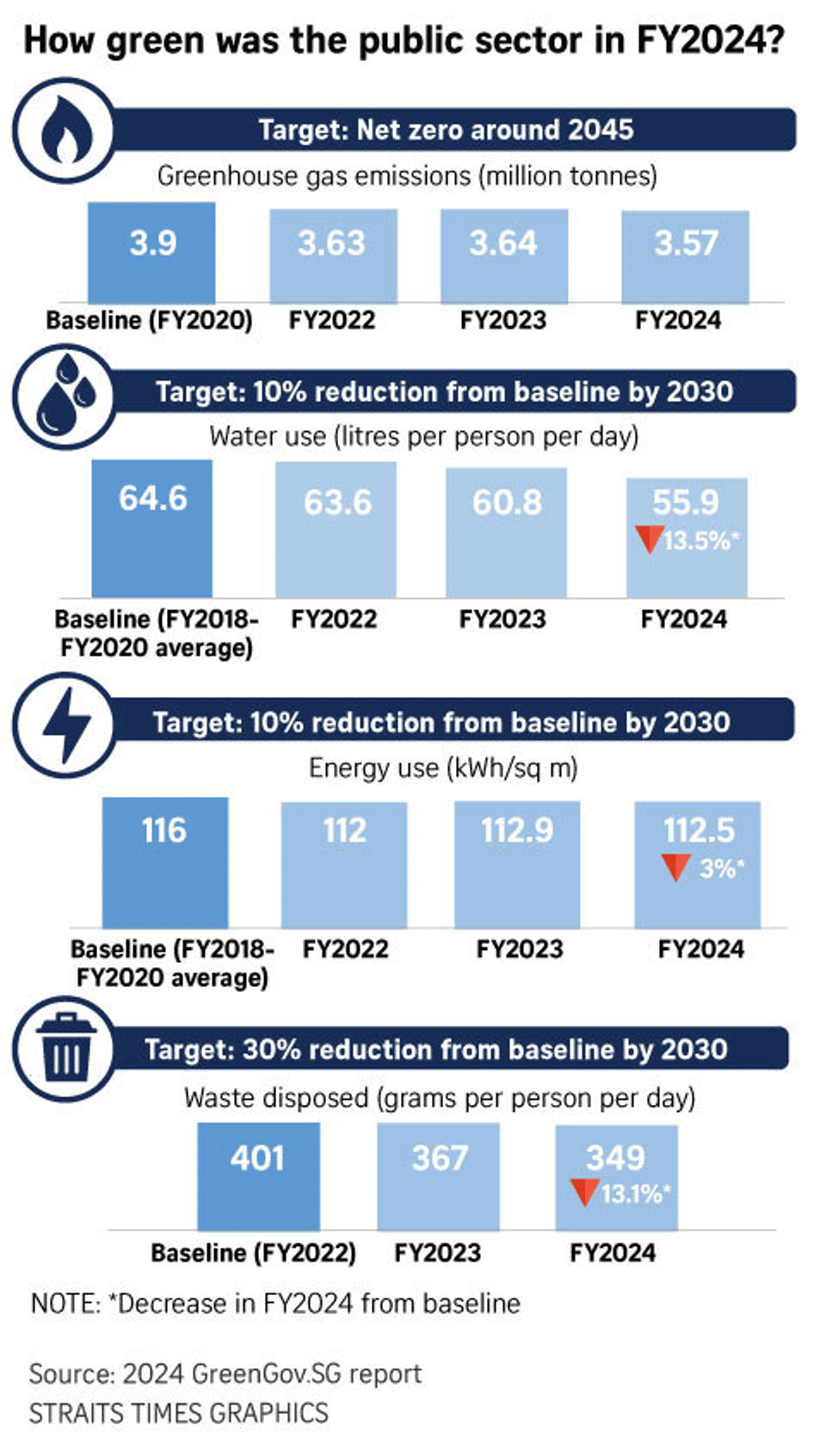Public sector carbon emissions fall slightly in FY2024, but set to rise with new energy plant in 2027

(Photo credit: NEA)
Source: The Straits Times
The public sector’s greenhouse gas emissions dropped slightly by 1.9 per cent in the 2024 financial year (FY) compared with the previous year, but direct emissions are set to rise in the coming years when a new incineration plant starts running.
Government agencies released 9.5 per cent less emissions in FY2024 than they did in the baseline year of 2020, the annual GreenGov report revealed on Oct 6.
This is an improvement from the 6.8 per cent reduction in FY2023, compared with 2020 levels. 2020 is used as the baseline year as this was when data collection for emissions began.
For FY2024 – between April 2024 and March 2025 – the public sector emitted around 3.6 million tonnes of greenhouse gases. That is about 6 per cent of the entire country’s emissions in recent years.
Direct emissions from the public sector dropped in the last two financial years due to the decommissioning of Tuas Incineration Plant in 2022. In addition, maintenance of the Tuas South waste-to-energy plant in the last year or so led to a reduction in the amount of waste that could be processed, and differences in the types of waste burned.
Direct emissions are expected to rise again when a new plant, the Integrated Waste Management Facility – part of the upcoming Tuas Nexus – becomes operational in 2027, the Ministry of Sustainability and the Environment (MSE) said in a statement on Oct 6.
The 88-page GreenGov report added that the Government is launching a pilot to test the deployment of carbon capture and storage technology, which entails the capturing of carbon dioxide emitted from plants, preventing it from accumulating in the atmosphere. This has the potential to significantly reduce direct emissions from waste incineration, said the report.
Direct emissions refer to emissions released from an organisation through burning natural gas or using diesel, or when waste materials are burned for energy.
The public sector’s use of electricity as well as heating and cooling rose by 2 per cent from FY2023 levels because of new infrastructure in the transport and healthcare sectors.
This includes the opening of stage four of the Thomson-East Coast Line, Woodlands Health Campus and Tan Tock Seng Hospital Integrated Care Hub.
The 2 per cent increase refers to indirect emissions due to the purchase of electricity, steam, heating and cooling for public buildings and infrastructure.
MSE said more growth in indirect emissions is expected as Singapore’s public infrastructure expands.
However, “we are taking deliberate steps to maximise resource efficiency in both new and existing facilities, whilst accelerating renewable energy deployment and imports”, it added.
On that note, the energy efficiency of government facilities showed a slight improvement, with a 0.4 per cent reduction in buildings’ energy use intensity compared with FY2023 levels. In contrast with the 2018 to 2020 baseline, the 2024 figure was a 3 per cent improvement.
This was due to facilities tapping more solar energy and smart tech, with older buildings being retrofitted to reach Green Mark Platinum standards, said the report.
The public sector’s water use and amount of waste produced have also gone down over the years.
In FY2024, it used 32.9 billion litres of water, a 3.3 per cent decrease from the year before.
More water was saved over the years with agencies proactively detecting leaks through smart monitoring, improving water-intensive processes and coming up with initiatives to reuse water, said MSE.

Government agencies produced 210.1 million kg of waste in FY2024, a 2.2 per cent drop from 2023. The slight improvement was due to reduction of unnecessary packaging, reuse of decommissioned properties and recycling of food waste, said the ministry.
The public sector’s overall goal is to reduce energy and water use by 10 per cent and waste disposed of by 30 per cent by 2030, compared with their respective baselines.
The GreenGov report has been released since 2023 to provide an update on the public sector’s performance on greenhouse gas emissions, energy consumption, water use and waste disposed.
It covers office buildings, healthcare facilities, schools, public utilities, transport infrastructure and vehicles.
The public sector aims to reach net-zero emissions around 2045, five years ahead of the entire country. As part of this plan, the sector will peak emissions around 2025. This means that the public sector’s emissions will reach its highest around this period and stop growing, before starting to decline.
Climate observer Melissa Low called for more clarity on when the public sector is expected to peak emissions, given that the latest report covered emissions until March 2025.
The research fellow at the NUS Centre for Nature-based Climate Solutions said: “Is it safe to assume the Government is peaking or has peaked emissions aligned with its target? Or is the peak expected to take place only in 2026 or beyond?”
It was revealed in 2024 that the entire country plans to peak its emissions in 2028.
